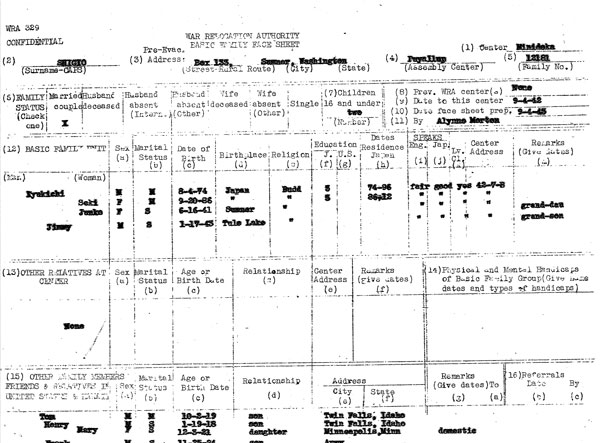Treasures of the Archives: Japanese Internment

In 1942, four-year-old Washington resident Junko Shigio was considered a threat to national security and sent with her family to the Minidoka War Relocation Center in Idaho for the duration of the Second World War. Executive Order 9066, signed by President Roosevelt on February 19th 1942, authorized the rounding up of all persons of Japanese ancestry living along the west coast of the United States. Throughout California, Oregon, and Washington State, Japanese Americans were given days or sometimes mere hours to prepare for their long-term stay in the camps. Some did not pack warm clothing for the Idaho winters, or even have time to secure the personal property they left behind.
In 1945, the internment system was brought to an end. Residents of the camps were given twenty-five dollars and a train ticket back to homes that were often no longer their own. In the 1980s, the federal government officially apologized for the treatment of Japanese Americans, and began offering restitution in the form of $20,000 for each detainee. The Washington State Archives maintains the Public Welfare/Social Security Department, (Japanese Internment) Assistance Cases, Evacuee Referrals for Resettlement and Assistance, 1945-1946 collection as a sad reminder of a regrettable time in American history.

